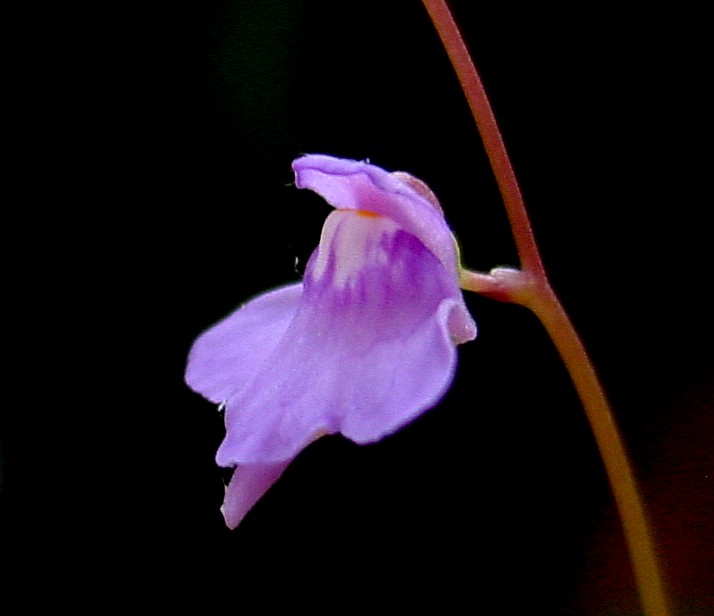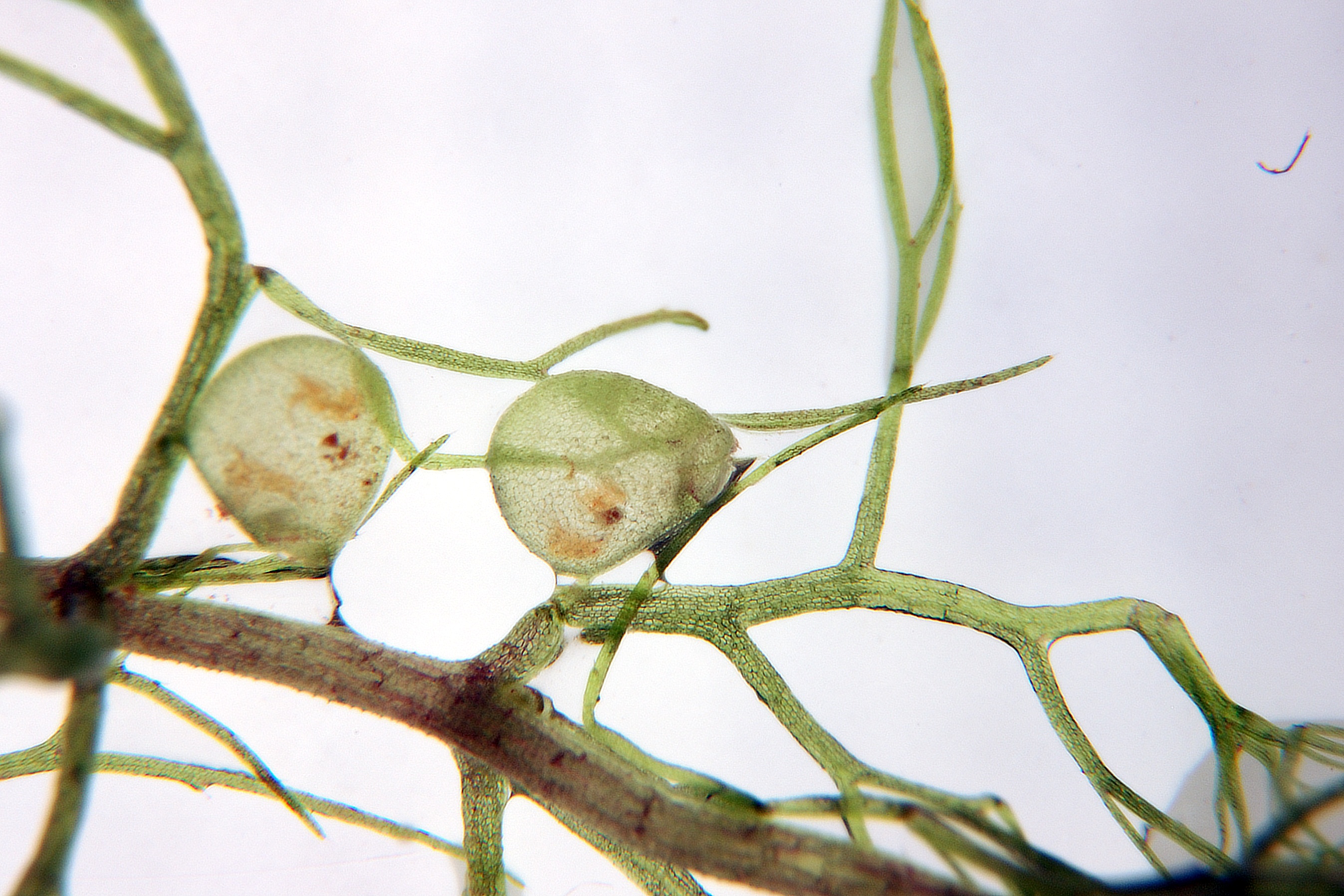|
Utricularia Sect. Mirabiles
''Utricularia'' sect. ''Mirabiles'' is a section (botany), section in the genus ''Utricularia''. The two species in this section are small or medium-sized rheophyte, rheophytic carnivorous plants. Peter Taylor (botanist), Peter Taylor originally described and published the section in 1989, splitting the two species off from section ''Utricularia sect. Avesicaria, Avesicaria'' on the basis of the dissimilar rhizoids, traps, Corolla (flower), corolla spur (botany), spur, and seeds. Both species are endemism, endemic to Venezuela.Taylor, Peter. (1989). ''The genus Utricularia - a taxonomic monograph''. Kew Bulletin Additional Series XIV: London. See also * List of Utricularia species, List of ''Utricularia'' species References Utricularia Plant sections {{Lentibulariaceae-stub ... [...More Info...] [...Related Items...] OR: [Wikipedia] [Google] [Baidu] |
Utricularia Mirabilis
''Utricularia mirabilis'' is a small, perennial plant, perennial, rheophyte, rheophytic carnivorous plant that belongs to the genus ''Utricularia''. ''U. mirabilis'' is endemism, endemic to Venezuela, where it is known from the biological type, type location near Campo Grande. It grows as a rheophyte in creek beds of shallow running water at altitudes around . It has been collected in fruit and flower in December. It was originally described and published by Peter Taylor (botanist), Peter Taylor in 1986.Taylor, Peter. (1989). ''The genus Utricularia - a taxonomic monograph''. Kew Bulletin Additional Series XIV: London. See also * List of Utricularia species, List of ''Utricularia'' species References Carnivorous plants of South America Flora of Venezuela Utricularia, mirabilis {{Lentibulariaceae-stub ... [...More Info...] [...Related Items...] OR: [Wikipedia] [Google] [Baidu] |
Utricularia Heterochroma
''Utricularia heterochroma'' is a very small, possibly perennial, rheophytic carnivorous plant that belongs to the genus ''Utricularia''. ''U. heterochroma'' is endemic to Venezuela, where it is known from the type location at Ptari-tepui, two collections from Toronó-tepui, one collection from Apacará-tepui, one collection from Serrania Guanay, and several collections from the Chimantá Massif. It grows as a rheophyte on wet sandstone cliffs near waterfalls among mosses at altitudes from to . It was originally described and published by Julian Alfred Steyermark in 1953.Taylor, Peter. (1989). ''The genus Utricularia - a taxonomic monograph''. Kew Bulletin Additional Series XIV: London. See also * List of ''Utricularia'' species References Carnivorous plants of South America Flora of Venezuela heterochroma ''Heterochroma'' is a genus of moths of the family Noctuidae. The genus was erected by Achille Guenée in 1852. Species * '' Heterochroma albipuncta' ... [...More Info...] [...Related Items...] OR: [Wikipedia] [Google] [Baidu] |
Section (botany)
In botany, a section ( la, sectio) is a taxonomic rank below the genus, but above the species. The subgenus, if present, is higher than the section, and the rank of series, if present, is below the section. Sections may in turn be divided into subsections.Article 4 in Sections are typically used to help organise very large genera, which may have hundreds of species. A botanist wanting to distinguish groups of species may prefer to create a taxon at the rank of section or series to avoid making new combinations, i.e. many new binomial names for the species involved. Examples: * '' Lilium'' sectio ''Martagon'' Rchb. are the Turks' cap lilies * '' Plagiochila aerea'' Taylor is the type species In zoological nomenclature, a type species (''species typica'') is the species name with which the name of a genus or subgenus is considered to be permanently taxonomically associated, i.e., the species that contains the biological type specimen( ... of ''Plagiochila'' sect. ''Bursata ... [...More Info...] [...Related Items...] OR: [Wikipedia] [Google] [Baidu] |
Utricularia
''Utricularia'', commonly and collectively called the bladderworts, is a genus of carnivorous plants consisting of approximately 233 species (precise counts differ based on classification opinions; a 2001 publication lists 215 species).Salmon, Bruce (2001). ''Carnivorous Plants of New Zealand''. Ecosphere Publications. They occur in fresh water and wet soil as terrestrial or aquatic species across every continent except Antarctica. ''Utricularia'' are cultivated for their flowers, which are often compared with those of snapdragons and orchids, especially amongst carnivorous plant enthusiasts. All ''Utricularia'' are carnivorous and capture small organisms by means of bladder-like traps. Terrestrial species tend to have tiny traps that feed on minute prey such as protozoa and rotifers swimming in water-saturated soil. The traps can range in size from .Taylor, Peter. (1989). '' The genus Utricularia - a taxonomic monograph''. Kew Bulletin Additional Series XIV: London. Aquatic s ... [...More Info...] [...Related Items...] OR: [Wikipedia] [Google] [Baidu] |
Rheophyte
A rheophyte is a plant that lives in fast moving water currents in an environment where few other organisms can survive. Rheophytes tend to be found in currents that move at rates of one to two meters per second and that are up to 1 to 2 m deep. The amount of force produced by these currents, and the damaging debris they can carry, makes this environment inhospitable to most plants. Rheophytes are able to live in such environments because their leaves are streamlined so as put up little resistance to the flow of water. The leaves tend to be quite narrow and flexible as well. Simply being an aquatic plant Aquatic plants are plants that have adapted to living in aquatic environments ( saltwater or freshwater). They are also referred to as hydrophytes or macrophytes to distinguish them from algae and other microphytes. A macrophyte is a plant that ... with narrow leaves is not a sufficient condition for being a rheophyte. In order to prevent being uprooted by the rushing currents, ... [...More Info...] [...Related Items...] OR: [Wikipedia] [Google] [Baidu] |
Carnivorous Plant
Carnivorous plants are plants that derive some or most of their nutrients from trapping and consuming animals or protozoans, typically insects and other arthropods. Carnivorous plants still generate some of their energy from photosynthesis. Carnivorous plants have adapted to grow in places where the soil is thin or poor in nutrients, especially nitrogen, such as acidic bogs. They can be found on all continents except Antarctica, as well as many Pacific islands. In 1875 Charles Darwin published ''Insectivorous Plants'', the first treatise to recognize the significance of carnivory in plants, describing years of painstaking research. True carnivory is believed to have evolved independently at least 12 times in five different orders of flowering plants, and is represented by more than a dozen genera. This classification includes at least 583 species that attract, trap, and kill prey, absorbing the resulting available nutrients. Venus flytrap (''Dionaea muscipula''), pitcher p ... [...More Info...] [...Related Items...] OR: [Wikipedia] [Google] [Baidu] |
Peter Taylor (botanist)
Peter Geoffrey Taylor (1926–2011) was a British botanist who worked at Royal Botanic Gardens, Kew throughout his career in botany. Taylor was born in 1926 and joined the staff of the herbarium at Kew in 1948. He published his first new species, ''Utricularia pentadactyla'', in 1954. In 1973, Taylor was appointed curator of the orchid division of the herbarium and, according to Kew, "under his direction, orchid taxonomy was revitalised and its horticultural contacts strengthened."Orchid Taxonomy at Kew Accessed online: 10 February 2008.Taylor, Peter. (1989). ''The genus Utricularia - a taxonomic monograph''. Kew Bulletin Additional Series XIV: London. One of Taylor's main botanical focuses was the genus '' |
Utricularia Sect
''Utricularia'', commonly and collectively called the bladderworts, is a genus of carnivorous plants consisting of approximately 233 species (precise counts differ based on classification opinions; a 2001 publication lists 215 species).Salmon, Bruce (2001). ''Carnivorous Plants of New Zealand''. Ecosphere Publications. They occur in fresh water and wet soil as terrestrial or aquatic species across every continent except Antarctica. ''Utricularia'' are cultivated for their flowers, which are often compared with those of snapdragons and orchids, especially amongst carnivorous plant enthusiasts. All ''Utricularia'' are carnivorous and capture small organisms by means of bladder-like traps. Terrestrial species tend to have tiny traps that feed on minute prey such as protozoa and rotifers swimming in water-saturated soil. The traps can range in size from .Taylor, Peter. (1989). ''The genus Utricularia - a taxonomic monograph''. Kew Bulletin Additional Series XIV: London. Aquatic spec ... [...More Info...] [...Related Items...] OR: [Wikipedia] [Google] [Baidu] |
Rhizoid
Rhizoids are protuberances that extend from the lower epidermal cells of bryophytes and algae. They are similar in structure and function to the root hairs of vascular land plants. Similar structures are formed by some fungi. Rhizoids may be unicellular or multicellular. Evolutionary development Plants originated in aquatic environments and gradually migrated to land during their long course of evolution. In water or near it, plants could absorb water from their surroundings, with no need for any special absorbing organ or tissue. Additionally, in the primitive states of plant development, tissue differentiation and division of labor was minimal, thus specialized water absorbing tissue was not required. The development of specialized tissues to absorb water efficiently and anchor themselves to the ground enabled the spread of plants to the land. Description Rhizoids absorb water mainly by capillary action, in which water moves up between threads of rhizoids and not through ... [...More Info...] [...Related Items...] OR: [Wikipedia] [Google] [Baidu] |
Corolla (flower)
Petals are modified leaves that surround the reproductive parts of flowers. They are often brightly colored or unusually shaped to attract pollinators. All of the petals of a flower are collectively known as the ''corolla''. Petals are usually accompanied by another set of modified leaves called sepals, that collectively form the ''calyx'' and lie just beneath the corolla. The calyx and the corolla together make up the perianth, the non-reproductive portion of a flower. When the petals and sepals of a flower are difficult to distinguish, they are collectively called tepals. Examples of plants in which the term ''tepal'' is appropriate include genera such as '' Aloe'' and '' Tulipa''. Conversely, genera such as ''Rosa'' and '' Phaseolus'' have well-distinguished sepals and petals. When the undifferentiated tepals resemble petals, they are referred to as "petaloid", as in petaloid monocots, orders of monocots with brightly colored tepals. Since they include Liliales, an alter ... [...More Info...] [...Related Items...] OR: [Wikipedia] [Google] [Baidu] |
Spur (botany)
The botanical term “spur” is given to outgrowths of tissue on different plant organs. The most common usage of the term in botany refers to nectar spurs in flowers. * nectar spur * spur (stem) * spur (leaf) See also * Fascicle *Sepal *Petal *Tepal *Calyx *Corolla Corolla may refer to: *Corolla (botany), the petals of a flower, considered as a unit *Toyota Corolla, an automobile model name * Corolla (headgear), an ancient headdress in the form of a circlet or crown * ''Corolla'' (gastropod), a genus of moll ... Plant anatomy Plant morphology {{SIA ... [...More Info...] [...Related Items...] OR: [Wikipedia] [Google] [Baidu] |
Endemism
Endemism is the state of a species being found in a single defined geographic location, such as an island, state, nation, country or other defined zone; organisms that are indigenous to a place are not endemic to it if they are also found elsewhere. For example, the Cape sugarbird is found exclusively in southwestern South Africa and is therefore said to be ''endemic'' to that particular part of the world. An endemic species can be also be referred to as an ''endemism'' or in scientific literature as an ''endemite''. For example ''Cytisus aeolicus'' is an endemite of the Italian flora. ''Adzharia renschi'' was once believed to be an endemite of the Caucasus, but it was later discovered to be a non-indigenous species from South America belonging to a different genus. The extreme opposite of an endemic species is one with a cosmopolitan distribution, having a global or widespread range. A rare alternative term for a species that is endemic is "precinctive", which applies t ... [...More Info...] [...Related Items...] OR: [Wikipedia] [Google] [Baidu] |




.jpg)